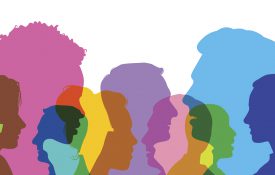-

Image of ‘Typical’ Welfare Recipient Linked With Racial Stereotypes
People tend to imagine the ‘typical’ welfare recipient as someone who is African American and who is lazier and less competent than someone who doesn’t receive welfare benefits, studies show.
-
New Research From Clinical Psychological Science
Read about the latest research published in Clinical Psychological Science: Metacognitive and Metamemory Beliefs in the Development and Maintenance of Posttraumatic Stress Disorder Melanie K. T. Takarangi, Rashelle A. Smith, Deryn Strange, and Heather D. Flowe Metacognition refers to the beliefs we have about the way we think. People who have maladaptive metacognitive beliefs after experiencing a trauma have been found to have greater levels of posttraumatic stress disorder (PTSD) symptomology.
-

Illusion Reveals that the Brain Fills in Peripheral Vision
What we see in the periphery, just outside the direct focus of the eye, may sometimes be a visual illusion, research shows.
-

Want to Give a Good Gift? Think Past the “Big Reveal”
Gift givers often make critical errors in gift selection during the holiday season, focusing on the moment of exchange instead of the long-term utility or practical attributes of the gift.
-

Visual Biases Near the Hands Help Us Perform Specific Actions
Using your hands to perform tasks in specific ways can change the way you see things near your hands, findings from two experiments show.
-
New Research From Psychological Science
Read about the latest research published in Psychological Science: Instantaneous Conventions: The Emergence of Flexible Communicative Signals Jennifer Misyak, Takao Noguchi, and Nick Chater Humans are often able to communicate even when they don't share the same language. How is this possible? Participants played a partner-based computer game in which bananas and scorpions were hidden in boxes. The goal of the game was to collect as many bananas as possible, but only one player could see inside the boxes and the other player was the only one who could "choose" the boxes. Players communicated nonverbally using a limited number of white tiles.

